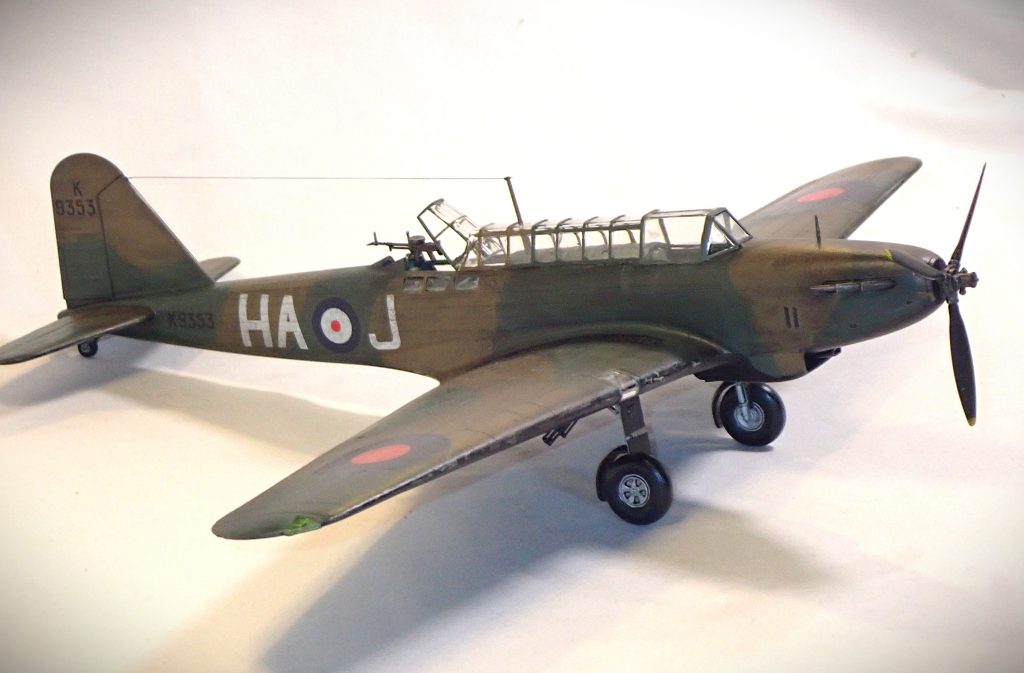The Fairey Battle is a single engine cantilever monoplane light bomber which was produced by the Fairey Aircraft Company from 1937. It is a large plane for the purpose for which it was built. It was designed as a light bomber with a three-man crew, an armament of only two Vickers machine guns, one in the port wing and the other in the rear cockpit and could carry a payload of 1,000lb standard in bomb bays in the wings or 1,500lb on external racks. It was old school design, very similar to the Blenheim in armament but with one engine. It was powered by a Rolls-Royce Merlin engine but its size and weight, especially when fully loaded, made it gravely underpowered. The type was meant to replace the Hawker Hart and Hind biplanes but by the time it entered service it was already obsolete with huge advances in fighter technology and performance. Consequently, it was totally outclassed by the German fighters.
The Battle was used operationally during the opening months of World War 2 and despite its poor performance it did hold the distinction of scoring the first aerial victory for the RAF. During the ‘phoney war’ on September 20th 1939 on a patrol over Aachen, a Bf 109 was shot down by Sgt. F. Letchford. However, by May 1940 the Battle squadrons were deployed to bomb and harass the advancing German Army in France, Belgium and the Low Countries with disastrous results. Most sorties returned having over 50% losses. At the end of 1940 the Battle was removed from frontline service and relegated to training duties. It was not considered suitable for home defence. A few Battles were deployed up until mid-1941 in the Mediterranean theatre but most of these were destroyed on the ground by Luftwaffe strafing raids.
There are four surviving aircraft of the type, two Battle 1 and two trainer types, in Britain, Australia, Belgium and Canada.
